Original source:Original source:
fourteen
With the NFT incident that crashed last week, the serious weakness of infrastructure (and user awareness) in the WEB3 world has become an obstacle for many enthusiasts who want to go deeper (I am really annoyed by asking where NFT is after mint).
So if you have the following doubts, then this article is the right guide for you!
Exported from the exchange to my own wallet, has it arrived?
The transaction of mintNFT is completed, where are my assets?
It is said that the data on the chain is public, how to extract the full amount of users who hold Boring Ape?
I heard that there are all kinds of strange arbitrage robots on the chain, where are they?
This article starts from the background data, interprets the detailed information meaning of blocks/transactions/addresses, and combines Etherscans expanded statistical information case, hoping to help you further open the door to web3!
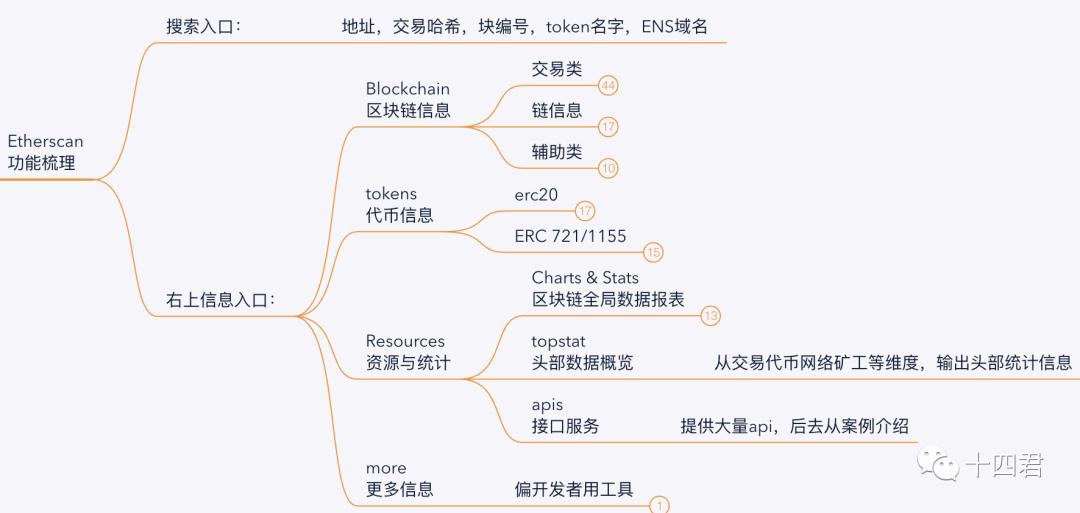
first level title
1. What can Etherscan do?
All interactions in Ethereum are public, and all related activities can be viewed using the transaction hash (transaction ID), including tokens, smart contracts, and wallet addresses.
This is like, if you find Musks address, you can monitor every transaction he makes.
first level title
2. What can’t Etherscan do?
When Netflixs NFT forgets web2s business securityWhen Netflixs NFT forgets web2s business security
first level title
3. What does Etherscan have?
Mainly divided into 3 categories
Basic specification data query entry
Customized interface service for developers
secondary title
3.1 Public basic information
We know that the so-called blockchain is a technology that packs several transactions into blocks after execution, publishes and records the ledger, and the so-called contract is that the transaction uses the remark area to carry customized code, so that the code logic can be executed in the virtual machine. After recording the original information of each transaction, it can be played back one by one to restore the whole process.
This involves three parts of public information: transactions, blocks, addresses. That is, the three areas in the figure below
In the middle is the most commonly used basic information:
ETHER PRICE: the current exchange price of eth to USD
TRANSACTIONS: Total number of transactions
MED GAS PRICE: the unit price of the handling fee for each transaction
MARKET CAP: Market value of total assets
DIFFICULTY and HASH RATE: not discussed
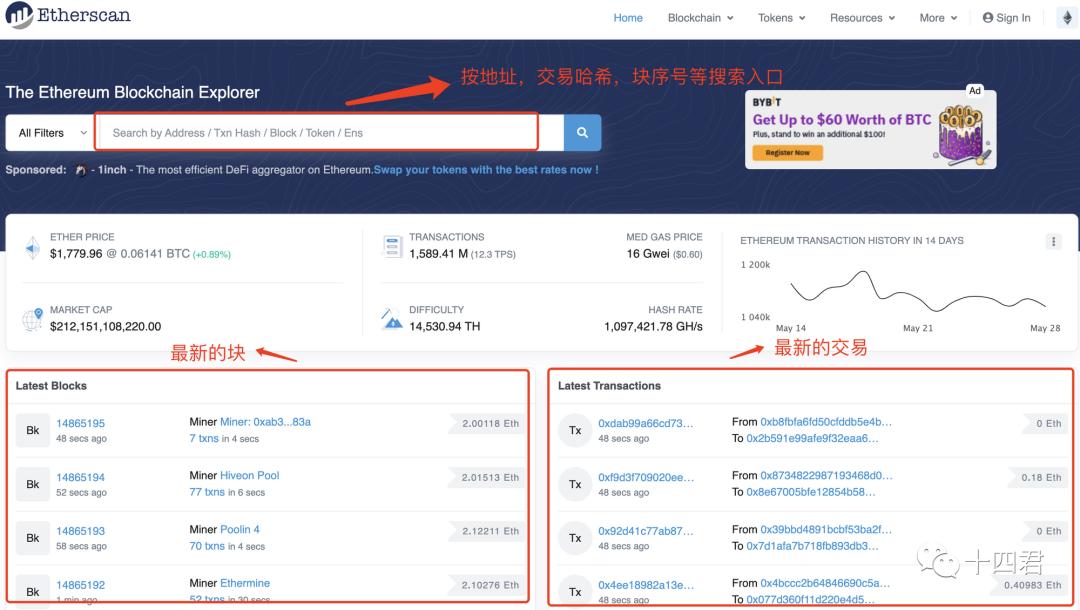
secondary title
3.2 What are the transaction details?
We arbitrarily choose a latest transaction point to enter, and most of the data are clear at a glance.
Like the whole lifecycle of an express:
What is the tracking number (Transaction Hash)
Whether the delivery was successful (Status)
When did the other party receive it (Timestamp)
Where do you come from, where do you go to
By which courier to pack (block)
Whats in the envelope (value+input data)
How much is the postage (Transaction Fee)
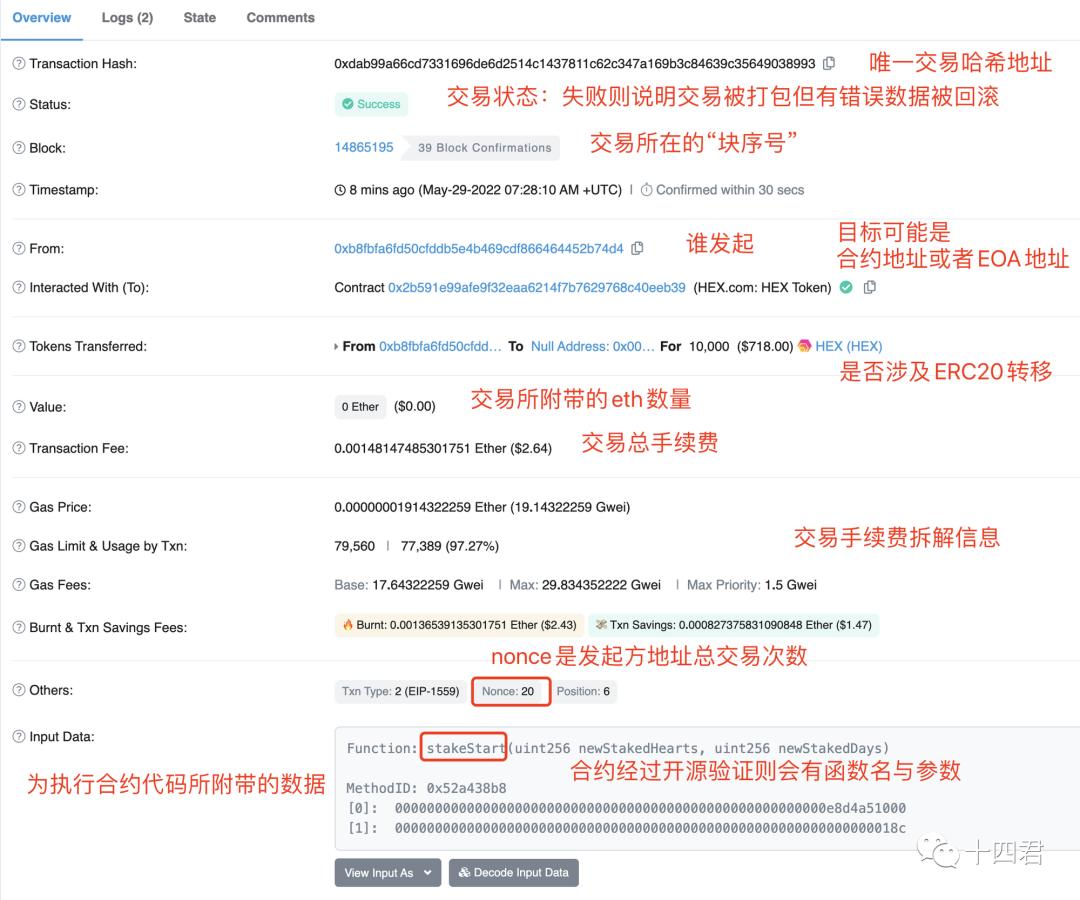
It is worth noting that the to address can be a contract, it can be the users address (EOA), or it can be 0x0, which means creating a new contract (although on Etherscan he will use the returned contract address as the location of to)
There are some other information entrances above
log: Represents the sequence of several function calls and main parameters executed during the execution of this transaction
comments: Comments, this is a centralized function rather than on-chain data.
secondary title
3.3 Whats in the block details?
Technical parameters, such as block rewards/uncle block rewards/Burnt fees, will not be discussed further
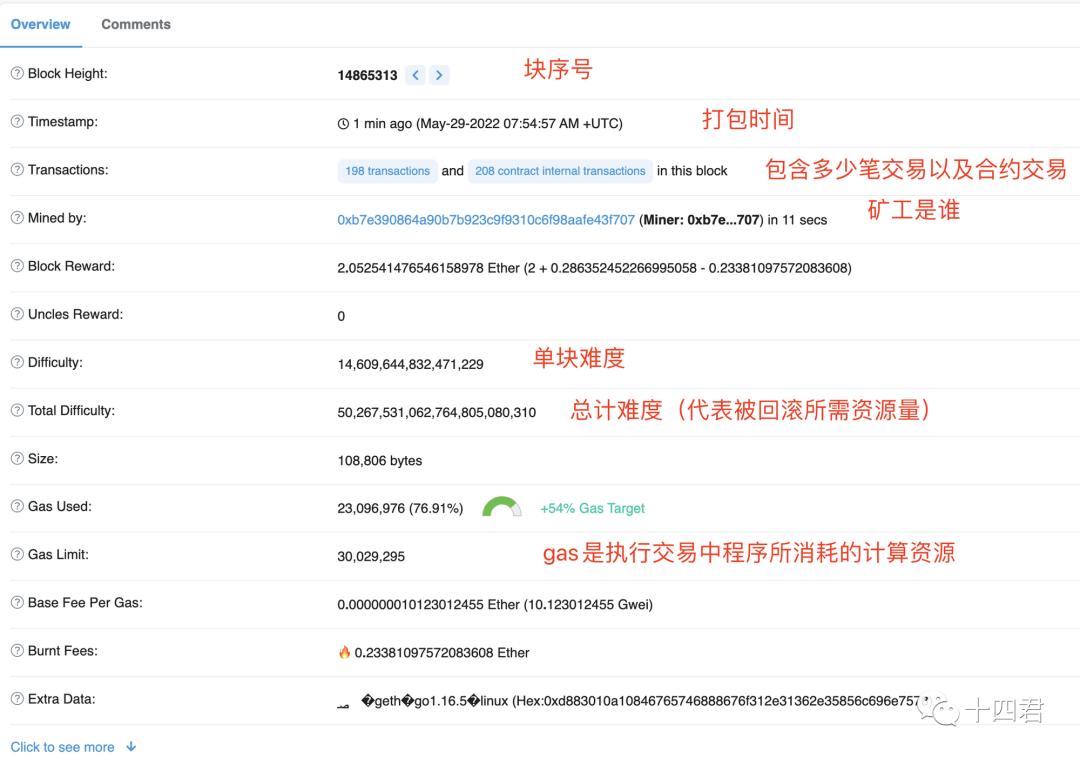
secondary title
3.4 What is in the address details?
Note that the information here comes from the chain, but it is actually reorganized by Etherscan.
If you are curious about how to find the various ERC20 tokens accumulated in your address, you can check them from the Token list.
If you have bought an ENS domain name, you can quickly find your own address through the domain name. Here, my address is a beautiful number that is collided by my own program (the last 4 digits are b14c, and there is a 14)
Below are the archive entries for several transaction types,
Among them, internal Tx is an internal transaction, which belongs to me calling a certain contract, and this contract has complex functions, and he initiates a transaction to schedule other


When the contract obtains some return information, the transaction with the contract as the from party is an internal transaction

Some addresses have received more user complaints + official verification, and the right side is marked with a risk label, a red shield, indicating that he may be a phishing contract, or he may be an address transferred to by a hacker after stealing funds.
There is also Analytics, which is the basic analysis report, and it can answer more questions, such as
Changes in the balance of a large account address, pay attention to what NFTs KOl in a certain industry has bought.
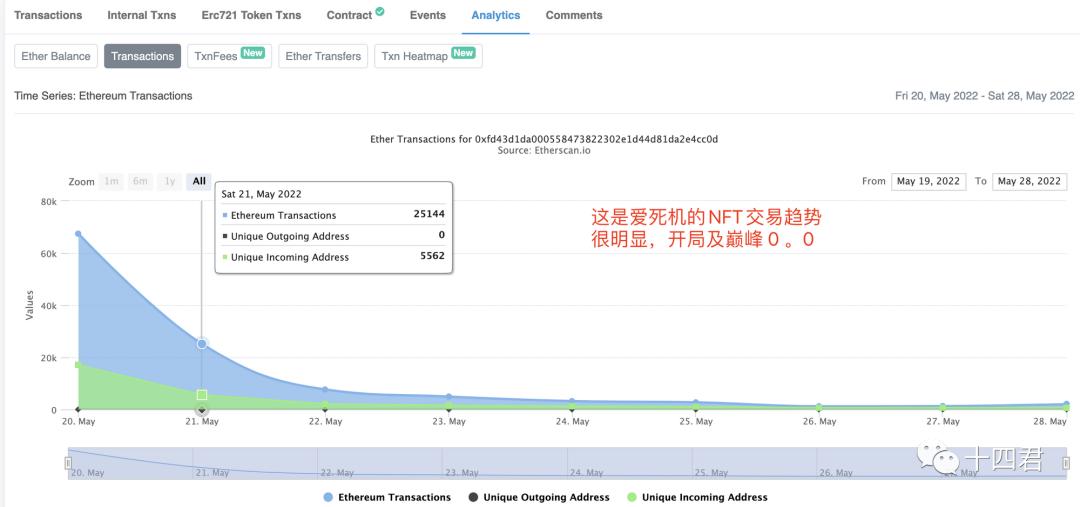
The recent trading volume of a certain contract is the most basic indicator that reflects the popularity of the products behind it
If this address is a contract, you can also see a contract column
For example, in the event of love death machine NFT
Analyze its use of 1271 dynamic signature verification technology, that is, go 1, see the source code
Query how many times each type of 1155 protocol nft has been mint, and the status query is 2, no gas required
Warning: This function needs to ensure that there is no problem with the smart contract itself, otherwise it may endanger the security of your assets, and it is not recommended for novices
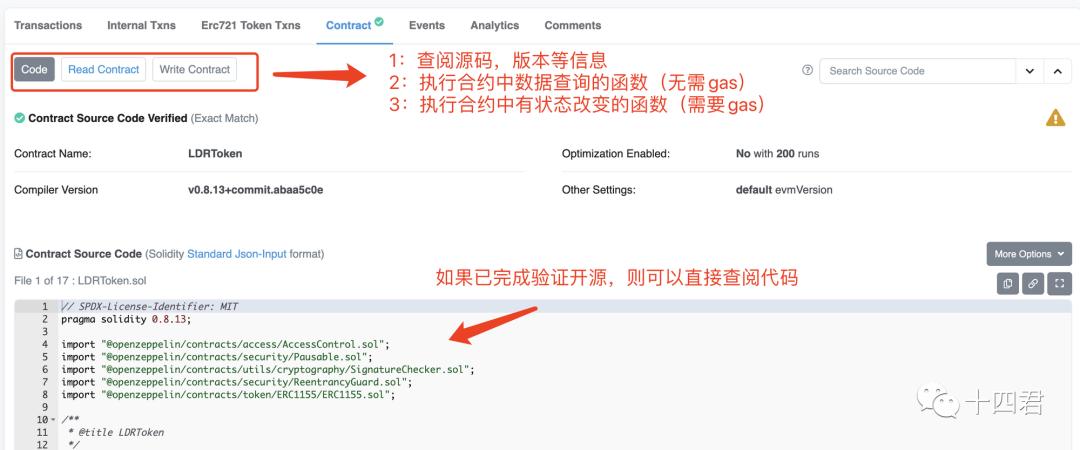
first level title
4. Advanced statistics
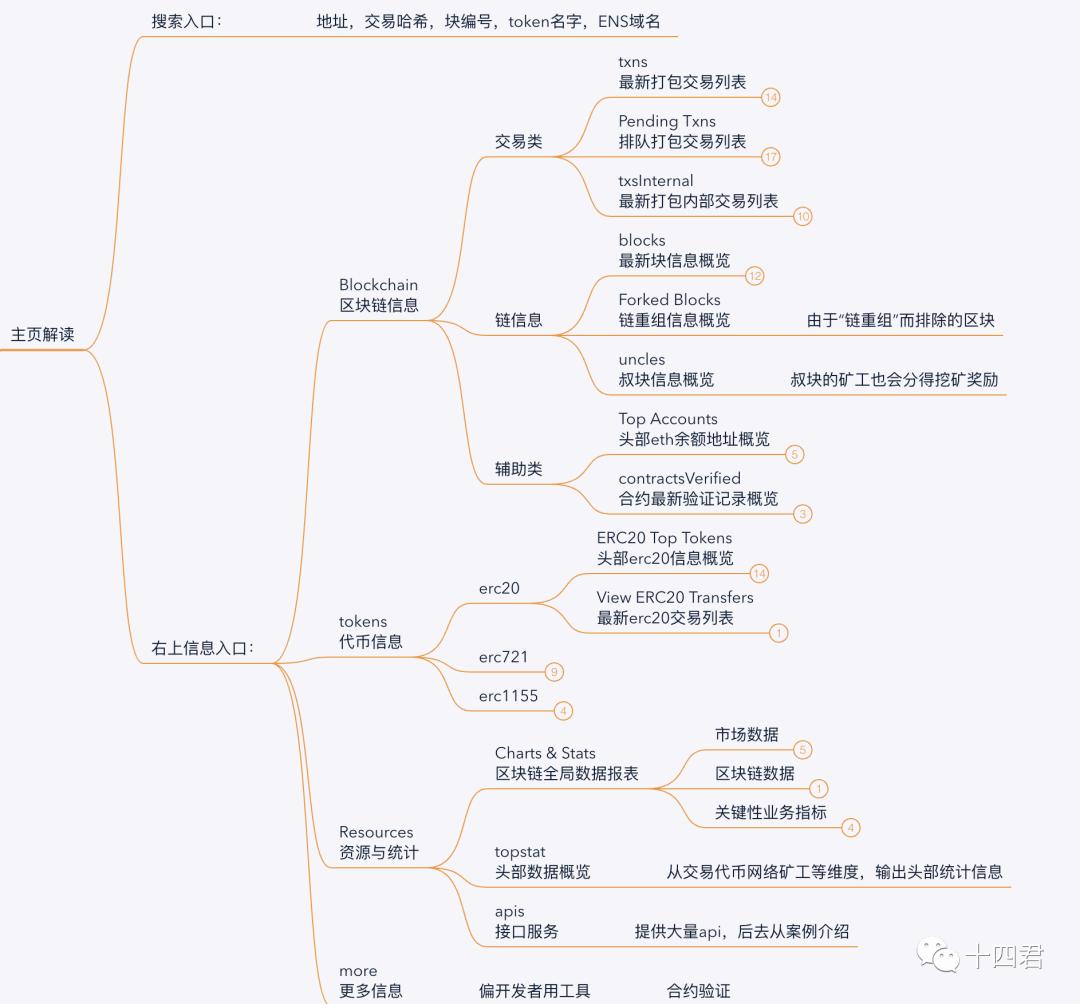
Of course, the data on the chain is public, which breaks the barriers of many web2 industries, and also gives birth to some basic statistical entries on Etherscan. I sort it out as follows (the opening picture expands)
The information here is too complicated to list, but to explain how to combine these information with examples
Pay attention to the movements of some big accounts: Top Accounts
Pay attention to the queued transaction queue: Pending Txns
The queuing instructions have not yet been packaged. Paying attention to this queue is like judging what will be sent from the perspective of God. Hackers can increase the gas price to package their transactions in advance and jump into the queue. Especially when it comes to NFTmint, they are all stuck in a block that permits mint to be packaged.

ERC20 header information list: anti-phishing, you can also see at a glance that there are currently 530,000 contracts that comply with ERC20, among which BNB and USDT are the largest in order of market value in circulation, and the number of addresses they hold and other information.
From Charts Stats, he has a lot of data, and different roles have different concerns.
For example, as a contract technology researcher, you will pay attention to gas, because deploying on-chain consumes a lot of gas, and you need to find a time point with lower gas costs.
If you pay attention to the status of different public chains, you can pay attention to the cross-chain to get the TVL (total locked amount) of other public chain ecology.
Every contract, maybe a product, means the prosperity of the overall ecology.
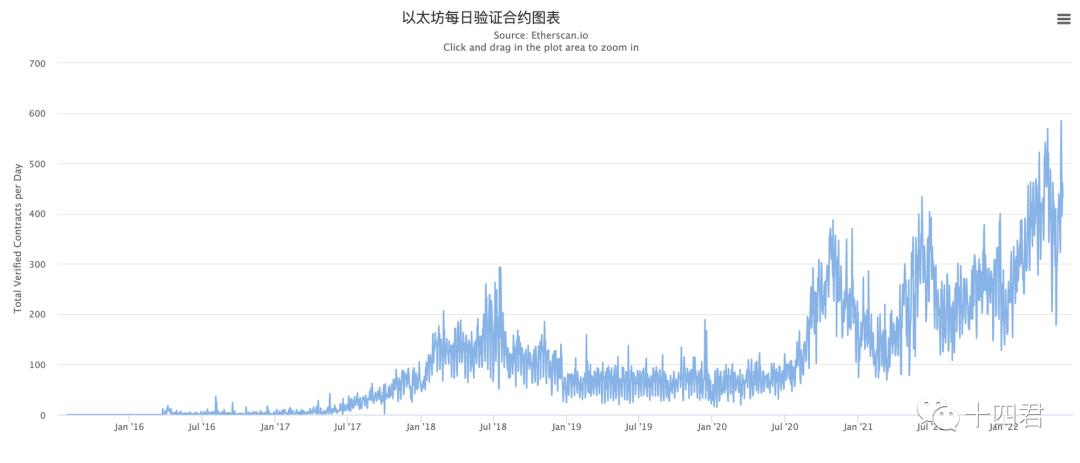
first level title
5. Customized information extraction
Of course, I’ve seen all of this. You must be a classmate with a lot of hands-on ability. In addition to reading reports, how to break the limit on the number of direct web page exports to excel, such as batch extraction of top 1W transactions? For example, how to study a hacker program to make money and how much? It is necessary to combine API documents for customized information extraction
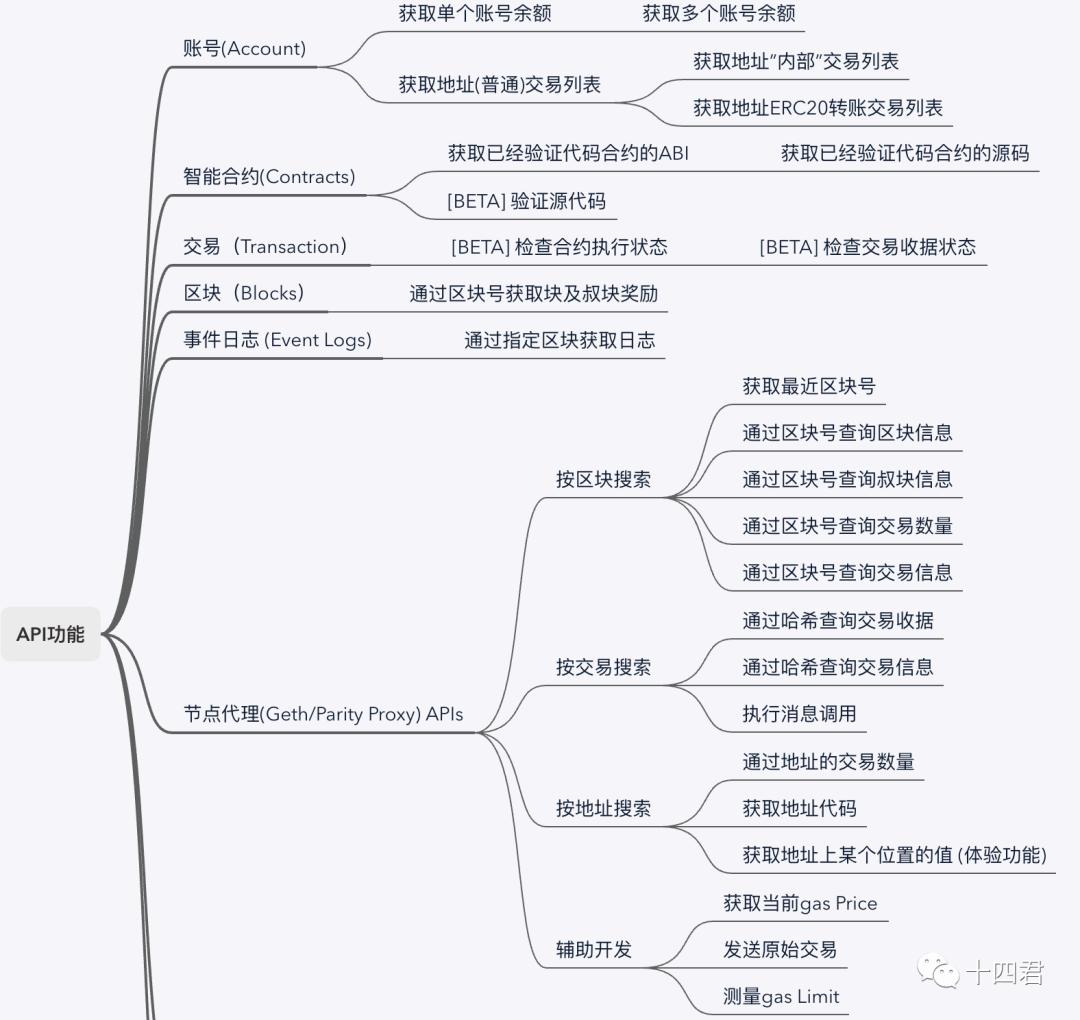
Finally, the information can be obtained through a simple url request, such as querying the balance of a specified address:
use:
/api?module=account&action=balance&address=0x&tag=latest&apikey=YourApiKeyToken
get:
{status: "1",message: "OK",result: "1111"}










